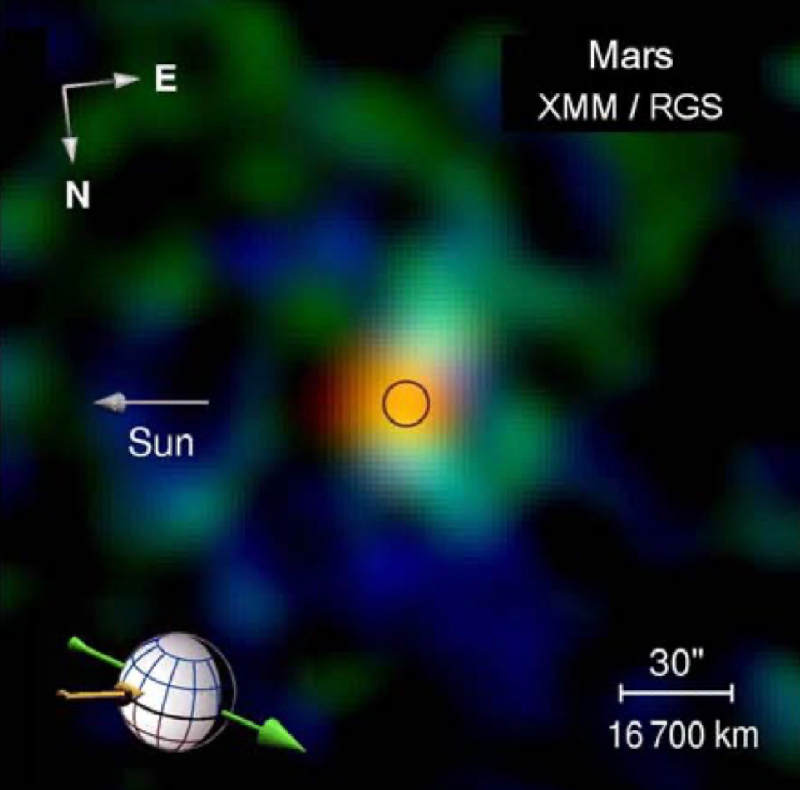
 Credit: K. Dennerl et al.; A. Bhardwaj
Credit: K. Dennerl et al.; A. Bhardwaj
Death Comes from Above
Our solar system is a dark and stormy place, due to the instability of our inconstant Sun. The solar insanity is the result of the interaction of the motion of the hot plasma which makes up the Sun, and the Sun's magnetic field (produced by the motions of the Sun's hot plasma). Since the sun is a ball of hot, ionized gas, it rotates at different rates at different latitudes. As a result, the Sun's magnetic field, which threads the outer layers of the plasma, gets wound up tighter and tighter. Every 11 years or so, the Sun's magnetic field gets so wound-up that it breaks down, producing sudden random releases of powerful electromagnetic energy we see as solar flares. These solar flares can eject significant quantities of the Sun's electrically-charged matter into interplanetary space. These solar cosmic rays pass through the solar system and can collide with a planet's magnetosphere, producing beautiful aurorae near the planet's northern and southern magnetic latitudes, of the kind recently seen over much of North America. But these eruptions are dangerous too: they can impact and destroy any artificial satellites in their way, possibly destroying an advanced civilization. Even more catastrophically, these eruptions can help erode a planet's atmosphere, if the planet has no magnetosphere to shield it. The interaction of the solar wind and stronger solar eruptions may have helped strip the atmosphere from the planet Mars, sterilizing the planet's surface. The image above is a false-color X-ray image of Mars taken by the Reflection Grating Spectrometer instrument on ESA's XMM-Newton X-ray observatory, showing in detail how cosmic rays from the Sun interact with the thin Martian atmosphere. This image was obtained in November 2003, nearly 22 years ago when the Sun, was nearly as eruptive as it is now. The image shows an extended region of X-ray emission in green; this emission is produced as electrons from the Sun are captured by atoms of carbon, nitrogen, oxygen and neon in the outer Martian atmosphere. This emission extends away from the Sun, blown back by the solar wind. The orange region shows emission produced by the interactions of X-rays from the Sun with material on Mars. For scale, the black circle shows the size and location of Mars at the time the image was obtained.
Published: October 28, 2024
<
HEA Dictionary ● Archive
● Search HEAPOW
● Other Languages
● HEAPOW on Facebook
● Download all Images
● Education ● HEAD
>
Each week the HEASARC
brings you new, exciting and beautiful images from X-ray and Gamma ray
astronomy. Check back each week and be sure to check out the HEAPOW archive!
Page Author: Dr. Michael F. Corcoran
Last modified Monday, 04-Nov-2024 17:43:45 EST


